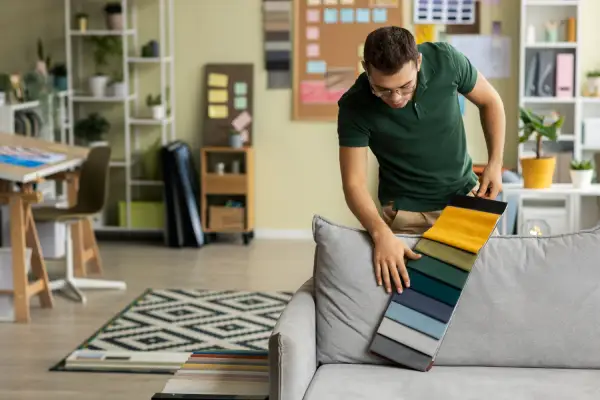The Intersection of Interior Design and Architecture
At their core, both architecture and interior design aim to enhance how people interact with spaces. While architecture focuses on the structural aspects—walls, ceilings, and foundations—interior design brings life to these structures by shaping the mood, functionality, and aesthetics of the interiors. Together, they:
- Define Purpose: A well-designed space seamlessly integrates its architectural foundation with interior elements to serve its intended purpose.
- Enhance Functionality: Thoughtful layouts ensure every square foot is utilized efficiently without compromising comfort or style.
- Create Cohesion: Harmonizing materials, colors, and textures ties the interior and exterior design into a unified whole.
Key Principles of Successful Integration
-
Balance Between Aesthetics and Practicality:
- A beautiful space must also be functional. Architectural layouts should complement interior elements like furniture placement, lighting, and traffic flow.
-
Sustainability:
- Both architecture and interior design increasingly prioritize eco-friendly materials and energy-efficient systems. Features like natural lighting, recycled materials, and smart home technologies bridge the gap between style and sustainability.
-
Customization:
- Personalization is key to creating spaces that resonate with their occupants. This involves tailoring both architectural elements and interior designs to suit individual lifestyles and preferences.
-
Technology Integration:
- The rise of smart homes and IoT devices calls for seamless integration between architectural layouts and interior technology setups, ensuring harmony between design and functionality.
The Role of Materials in Interior and Architectural Design
Materials act as the building blocks for both disciplines. Combining the right materials can elevate the design and functionality of a space. For example:
- Wood and Stone: These timeless materials bring warmth and authenticity to interiors while maintaining structural integrity.
- Glass: Large glass windows and partitions blur the lines between indoor and outdoor spaces, enhancing natural light.
- Sustainable Alternatives: Recycled tiles, bamboo flooring, and eco-paints are gaining popularity for their minimal environmental impact.
Trends Blurring the Lines Between Interior Design and Architecture
-
Open-Plan Living:
- Merging kitchens, dining areas, and living rooms into a single cohesive space encourages social interaction and maximizes natural light.
-
Biophilic Design:
- Integrating natural elements like indoor plants, water features, and organic materials fosters well-being and a connection to nature.
-
Minimalism:
- Simplistic designs focusing on clean lines and uncluttered spaces are redefining modern interiors and architecture.
-
Adaptive Spaces:
- Multi-functional rooms equipped with movable walls and modular furniture offer flexibility for changing needs.
Notable Examples of Integration
-
Fallingwater by Frank Lloyd Wright:
- This architectural masterpiece blends seamlessly with its natural surroundings while offering stunning interior spaces that reflect the home’s environment.
-
The Eames House:
- A perfect example of modernist design, where the interior and exterior coalesce to create a functional yet artistic living space.
-
Contemporary Urban Apartments:
- Many urban apartments now feature open-concept layouts, integrating architectural design with versatile interior elements to optimize small spaces.
How Saveeto Design Studio Excels in Integration
Saveeto Design Studio stands out for its ability to marry architectural vision with interior creativity. Their projects exemplify:
- Client-Centric Designs: Tailored solutions that reflect individual needs and preferences.
- Sustainability Focus: Eco-friendly practices that prioritize environmental well-being.
- Innovative Solutions: Cutting-edge technology and materials that redefine modern living spaces.
Final Thoughts
The fusion of interior design and architecture is about creating spaces that are not only visually appealing but also functional, sustainable, and reflective of their occupants’ personalities. As these disciplines continue to evolve, their collaboration will remain at the heart of exceptional design. Firms like Saveeto Design Studio showcase how this synergy can lead to transformative spaces that truly stand out.

